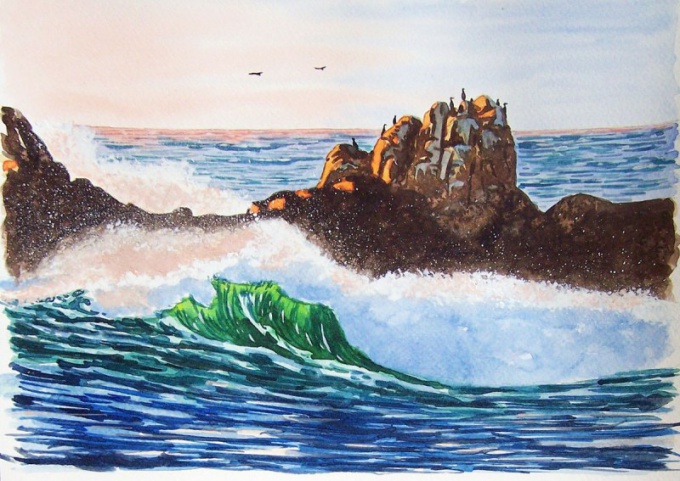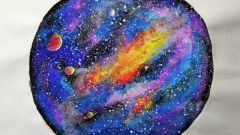You will need
- - a surface (cardboard, canvas);
- - gouache;
- - a set of hard brushes;
- - a container of water;
- - palette;
- - cloth;
- tablet to secure the sheet.
Instruction
1
Draw the background. The horizon line draw down the middle or move it up a little. The sky paint a smooth transition from blue to white. You can draw air clouds or massive clouds at will. To transition from the sky to the sea smoothly, draw a piece of sky blue or blue paint, and the other part - white, then broad brush sweeping horizontal strokes of paint on the border mix. If you want to depict a sunset or blossoming, then, instead of white gouache, it is appropriate to use pink or orange.
2
The sea itself is also coloured in blue and white colors. It is not necessary to apply strokes horizontally. The sea must live, and it is depicted with waves. Make brush strokes in different directions, use a large brush.
3
Mix yellow paint with green, add a little white. This dark greenish color will serve as the basis for a large wave, which is the compositional center of the picture. On top of the base waves on green lane will distribute the paint more stiff brush, giving the motion of the wave. A mix of blue, purple and white gouache finish the shadow of the wave.
4
Mix of blue and purple. This paint will be useful for strengthening the marine landscape and to draw the ripples on the water in those places where there are no waves.
5
Treat carefully to the details. For realism, use the whole palette of shades of blue and purple. White gouache brush the foam from the waves and spray. This can be done with a brush with stiff bristles. Just dip it in gouache and point movements will draw the foam or razreshite paint along the entire length of the wave.
6
If the figure will be present shoreline, rocks or other objects, such as ship, boat, birds, fish, their image must be traced in no less detail than the waves themselves. So you keep the integrity of the picture and soak it in the same style.
Useful advice
Surface for painting with gouache should absorb the water, so you will achieve an even layer. Use thick rough cardboard, wooden or clay plate.
Remember that gouache is not a watercolor, do not attempt to mix colors directly on the canvas in the process of drawing (especially if you have little experience). To dilute the gouache, to obtain the desired shade, use the palette. It can be plastic, wood artist's palette or a flat porcelain plate.
Remember that gouache is not a watercolor, do not attempt to mix colors directly on the canvas in the process of drawing (especially if you have little experience). To dilute the gouache, to obtain the desired shade, use the palette. It can be plastic, wood artist's palette or a flat porcelain plate.

